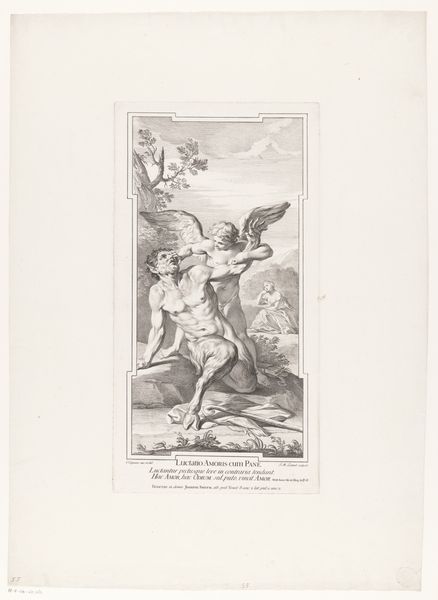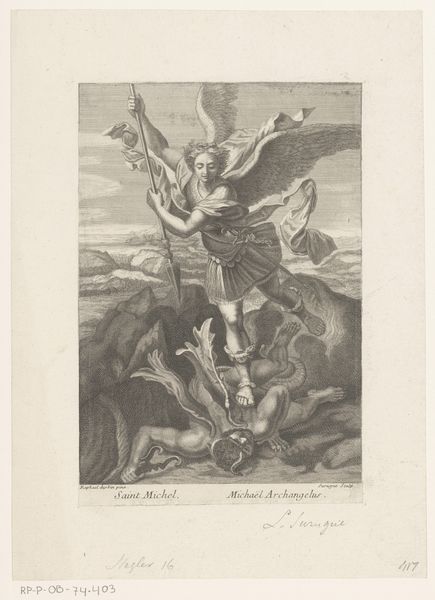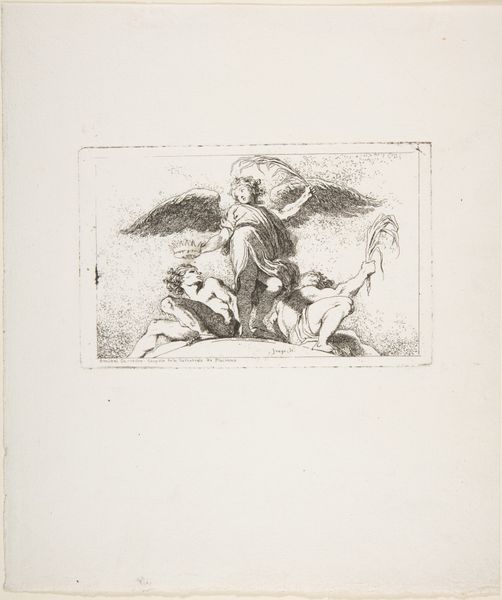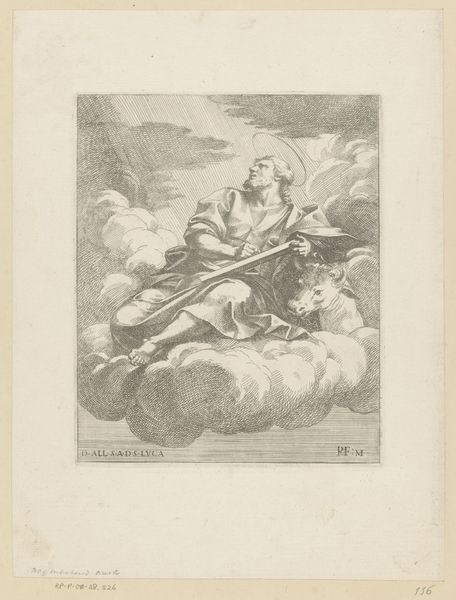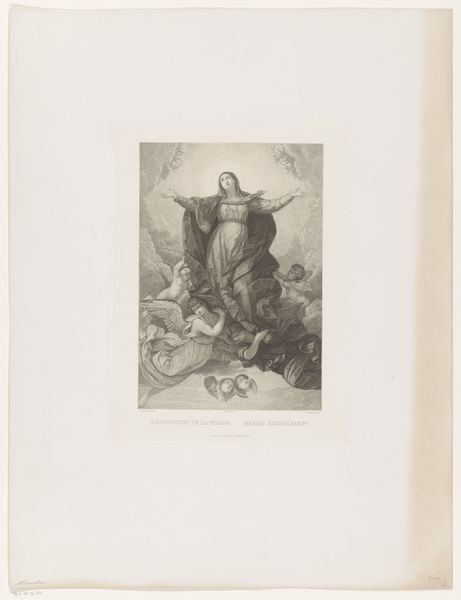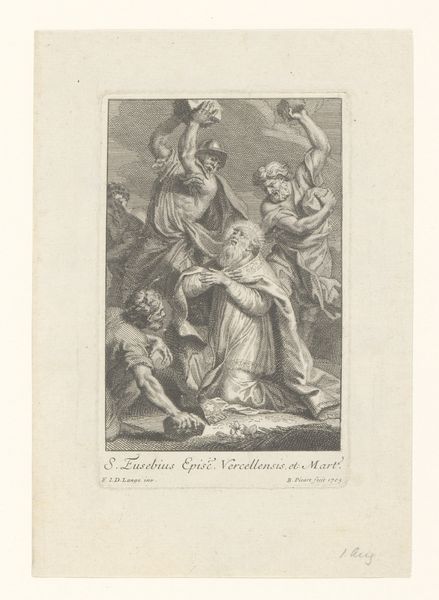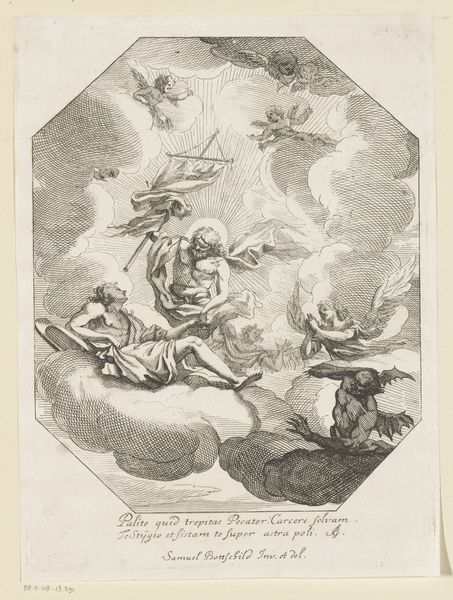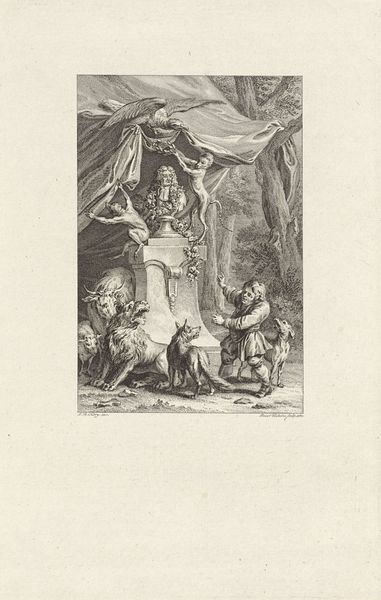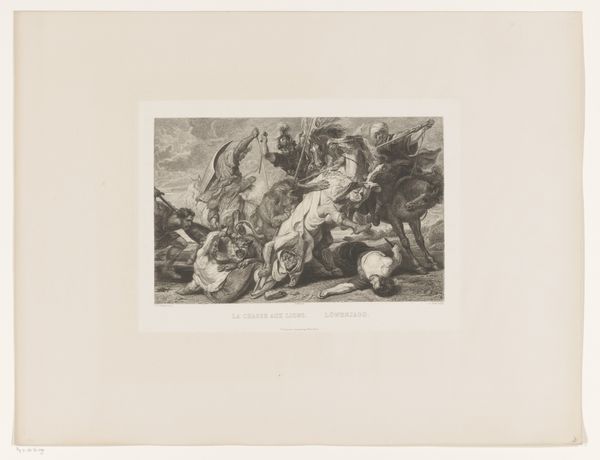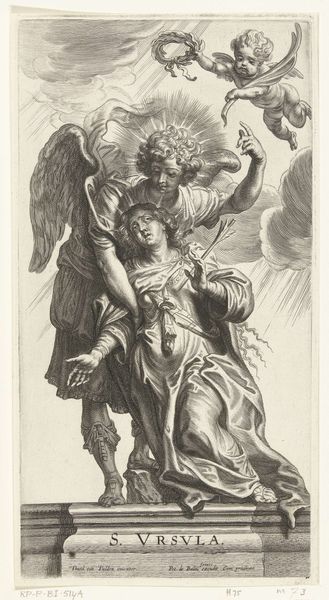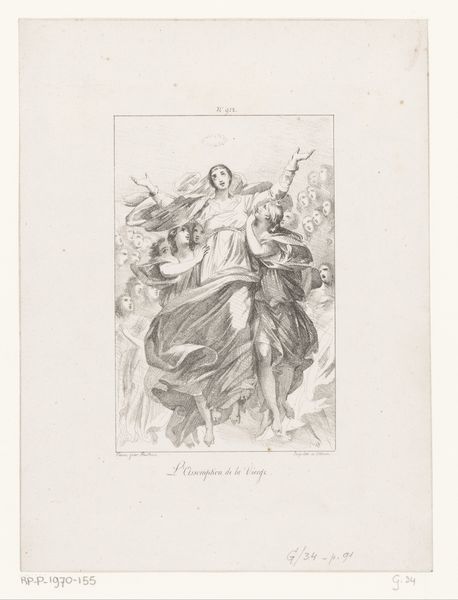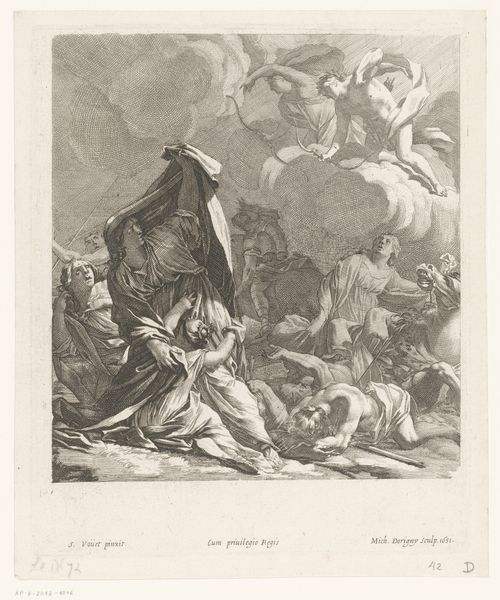
Dimensions: height 265 mm, width 215 mm
Copyright: Rijks Museum: Open Domain
Editor: So, we’re looking at C.A. Tuchs’ "Engel Gabriël," an etching from 1865. The angel's draped clothing has a wonderfully fluid, almost Baroque feel despite being a later work. The scene feels like a formal announcement, set in this heavenly space. What historical lens can we view this through? Curator: Indeed. Considering the context of 1865, we can interpret this piece within a larger historical narrative about religious imagery and its role in public and private life. Think about how printmaking made such imagery more widely accessible than paintings alone. This print’s connection to Baroque aesthetics might suggest an engagement with past styles, reviving classical imagery in new, more democratized forms. Why do you think Tuchs revived Baroque visual tropes? Editor: Maybe to suggest the importance or even legitimacy of his scene? Sort of anchoring this new work with established artistic and religious themes? What about the figure, Gabriel? Curator: Precisely. Think about Gabriel’s cultural function. What does Gabriel *do*? What *has* Gabriel done, historically? Angels occupy liminal spaces; divine messengers between realms. Images like these functioned within a complex socio-political fabric. Did this image inspire hope during a turbulent period, or maybe evoke specific doctrines of faith? These prints weren’t just aesthetic objects, they had a social life. Editor: That makes me consider the people buying these prints – did they primarily appeal to personal religious practice, or something more social? Curator: A compelling question. Understanding the intended audience informs our analysis. If these prints were aimed at domestic devotion, it signals one kind of engagement with religion, but if intended for public display or dissemination it suggests an entirely different intention. It helps us place it in its historical landscape and to better understand the artist's intent, and it makes the work of art speak much more broadly than the art alone. Editor: I hadn’t thought about the different impacts. Thinking about Tuchs' goals broadens how I perceive the image’s cultural and historical meaning. Curator: Exactly! Every brushstroke, or in this case, every line etched, carries historical weight.
Comments
No comments
Be the first to comment and join the conversation on the ultimate creative platform.
